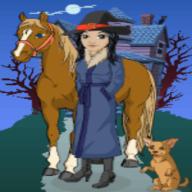用英文介紹Japan(急)~~50 words
2006-10-28 4:46 am
用英文介紹Japan(急)~~50 words
回答 (2)
2006-10-28 6:26 am
✔ 最佳答案
Japan is a popular place in Asia . And also there is a shopping heaven in Asia such as Tokyo , Osaka , Ginza . There has many places that you can visit suck as Fuji mountain , Hellokitty Land , Disneyland . After you finished your trip , you can buy some souvenir to your friends or family in Ginza .
2006-10-28 5:46 pm
Japan (Japanese: 日本/日本国, Nihon or Nippon,[1] officially Nihon-koku or Nippon-koku?) is an island country in East Asia. Located in the Pacific Ocean, it lies to the east of China, Korea, and Russia, stretching from the Sea of Okhotsk in the north to the East China Sea in the south. The characters that make up Japan's name literally mean "Sun's Origin", thus Japan is also sometimes known as "The Land of the Rising Sun", a name that comes from the country's eastward position relative to China. Its capital is Tokyo.
At 377,872 square kilometres (145,898 sq mi), Japan is the 62nd largest country by area. It encompasses over 3,000 islands, the largest of which are Honshū, Hokkaidō, Kyūshū and Shikoku. Most of Japan's islands are mountainous, and many are volcanic, including the highest peak, Mount Fuji. It has the world's 10th largest population, with nearly 128 million people. The Greater Tokyo Area, with over 30 million residents, is the largest metropolitan area in the world.
Archaeological research indicates that people were living on the islands of Japan as early as the upper paleolithic period. The first written mention of Japan begins with brief appearances in Chinese history texts from the 1st century AD. Japanese history has been marked by alternating periods of long isolation and radical influence from the outside world. Its culture today is a mixture of outside and internal influences.
Since it adopted its constitution on May 3, 1947, Japan has maintained a unitary constitutional monarchy with an emperor and an elected parliament, the Diet, which is one of the oldest legislative bodies in Asia. Japan is an economic world power with the world's second largest economy, and is the sixth largest exporter and importer and is a member of the United Nations, G8, G4, and APEC.
The first signs of civilization appeared around 10,000 BC with the Jomon culture, characterized by a mesolithic to neolithic semi-sedentary hunter-gatherer lifestyle of pit dwelling and a rudimentary form of agriculture.[2] The Jomon people made decorated clay vessels, often with plaited patterns. Some of the oldest surviving examples of pottery in the world may be found in Japan.[3]
The Yayoi period, starting around 300 BC, marked the influx of new practices such as rice farming and iron and bronze-making brought by migrants from continental East Asia.[4] Japan first appears in written history in 57 AD, in China's Book of Later Han, as "the people of Wa, formed from more than one hundred tribes." In the 3rd century, according to China's Book of Wei, the most powerful kingdom in Japan was called Yamataikoku, and was ruled by the legendary Queen Himiko.
The Yamato period, from the 3rd century to the 7th century, saw the establishment of a dominant polity centered in the Yamato area whence arose the Japanese imperial lineage.
The kingdom of Baekje introduced Buddhism to Japan, and it was promoted by the Japanese ruling class. (Japan provided Baekje with military support.[5]) Prince Shōtoku devoted his efforts to the spread of Buddhism and Chinese culture in Japan. He is credited with bringing relative peace to Japan through the proclamation of the Seventeen-article constitution.
Starting with the Taika Reform Edicts of 645, the Yamato court intensified the adoption of Chinese cultural practices and reorganized the government and the penal code based on the Chinese administrative structure of the time.[6] This paved the way for the dominance of Confucian philosophy in Japan till the 19th century. This period also saw the first use of the word Nihon (日本, Nihon?) as a name for the emerging state.
The Nara period of the 8th century marked the first emergence of a strong Japanese state, centered around an imperial court in the city of Heijō-kyō. The imperial court then moved briefly to Nagaoka, and then to Heian-kyō (now Kyoto).
At 377,872 square kilometres (145,898 sq mi), Japan is the 62nd largest country by area. It encompasses over 3,000 islands, the largest of which are Honshū, Hokkaidō, Kyūshū and Shikoku. Most of Japan's islands are mountainous, and many are volcanic, including the highest peak, Mount Fuji. It has the world's 10th largest population, with nearly 128 million people. The Greater Tokyo Area, with over 30 million residents, is the largest metropolitan area in the world.
Archaeological research indicates that people were living on the islands of Japan as early as the upper paleolithic period. The first written mention of Japan begins with brief appearances in Chinese history texts from the 1st century AD. Japanese history has been marked by alternating periods of long isolation and radical influence from the outside world. Its culture today is a mixture of outside and internal influences.
Since it adopted its constitution on May 3, 1947, Japan has maintained a unitary constitutional monarchy with an emperor and an elected parliament, the Diet, which is one of the oldest legislative bodies in Asia. Japan is an economic world power with the world's second largest economy, and is the sixth largest exporter and importer and is a member of the United Nations, G8, G4, and APEC.
The first signs of civilization appeared around 10,000 BC with the Jomon culture, characterized by a mesolithic to neolithic semi-sedentary hunter-gatherer lifestyle of pit dwelling and a rudimentary form of agriculture.[2] The Jomon people made decorated clay vessels, often with plaited patterns. Some of the oldest surviving examples of pottery in the world may be found in Japan.[3]
The Yayoi period, starting around 300 BC, marked the influx of new practices such as rice farming and iron and bronze-making brought by migrants from continental East Asia.[4] Japan first appears in written history in 57 AD, in China's Book of Later Han, as "the people of Wa, formed from more than one hundred tribes." In the 3rd century, according to China's Book of Wei, the most powerful kingdom in Japan was called Yamataikoku, and was ruled by the legendary Queen Himiko.
The Yamato period, from the 3rd century to the 7th century, saw the establishment of a dominant polity centered in the Yamato area whence arose the Japanese imperial lineage.
The kingdom of Baekje introduced Buddhism to Japan, and it was promoted by the Japanese ruling class. (Japan provided Baekje with military support.[5]) Prince Shōtoku devoted his efforts to the spread of Buddhism and Chinese culture in Japan. He is credited with bringing relative peace to Japan through the proclamation of the Seventeen-article constitution.
Starting with the Taika Reform Edicts of 645, the Yamato court intensified the adoption of Chinese cultural practices and reorganized the government and the penal code based on the Chinese administrative structure of the time.[6] This paved the way for the dominance of Confucian philosophy in Japan till the 19th century. This period also saw the first use of the word Nihon (日本, Nihon?) as a name for the emerging state.
The Nara period of the 8th century marked the first emergence of a strong Japanese state, centered around an imperial court in the city of Heijō-kyō. The imperial court then moved briefly to Nagaoka, and then to Heian-kyō (now Kyoto).
收錄日期: 2021-04-19 01:59:28
原文連結 [永久失效]:
https://hk.answers.yahoo.com/question/index?qid=20061027000051KK03759


